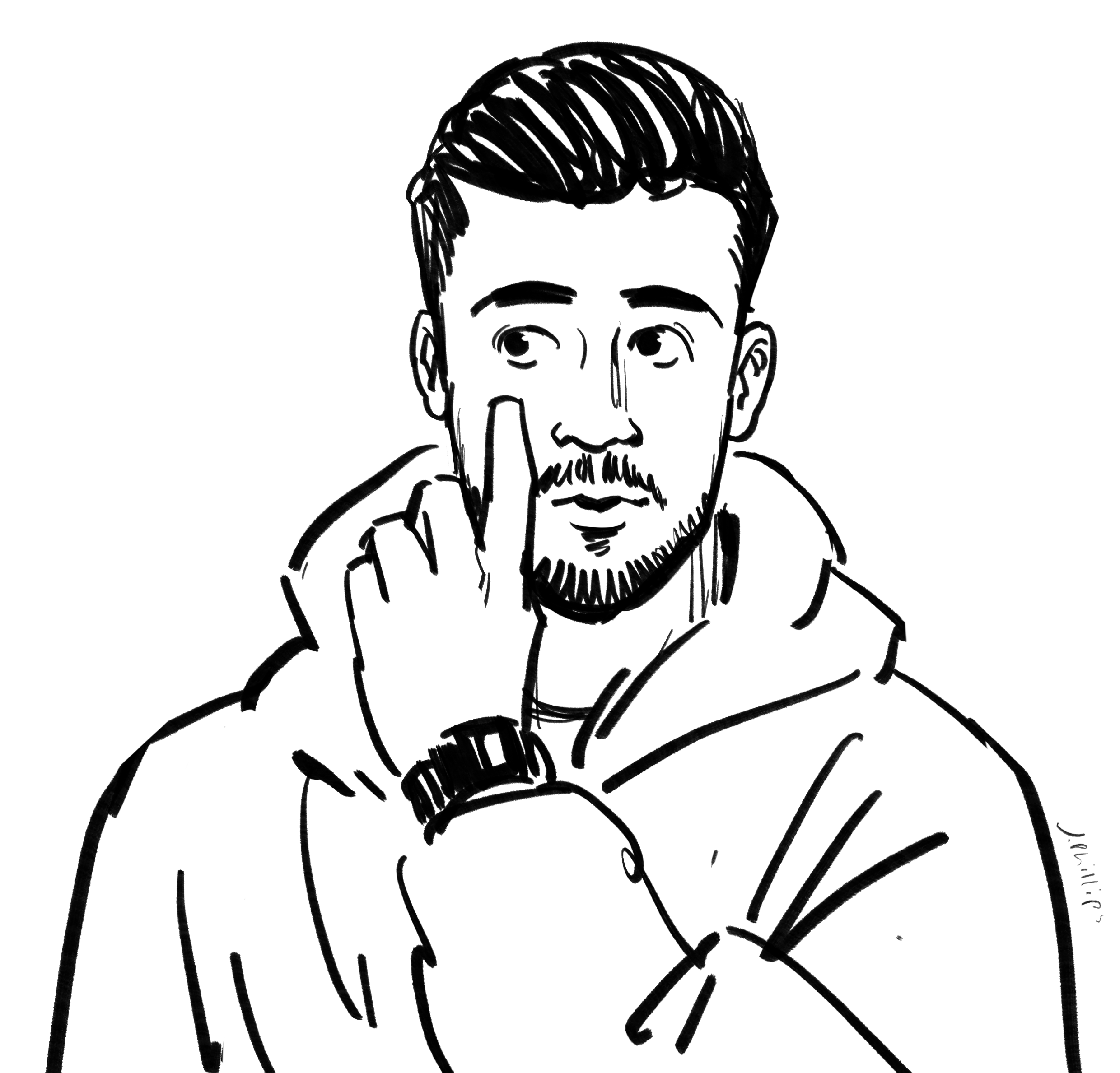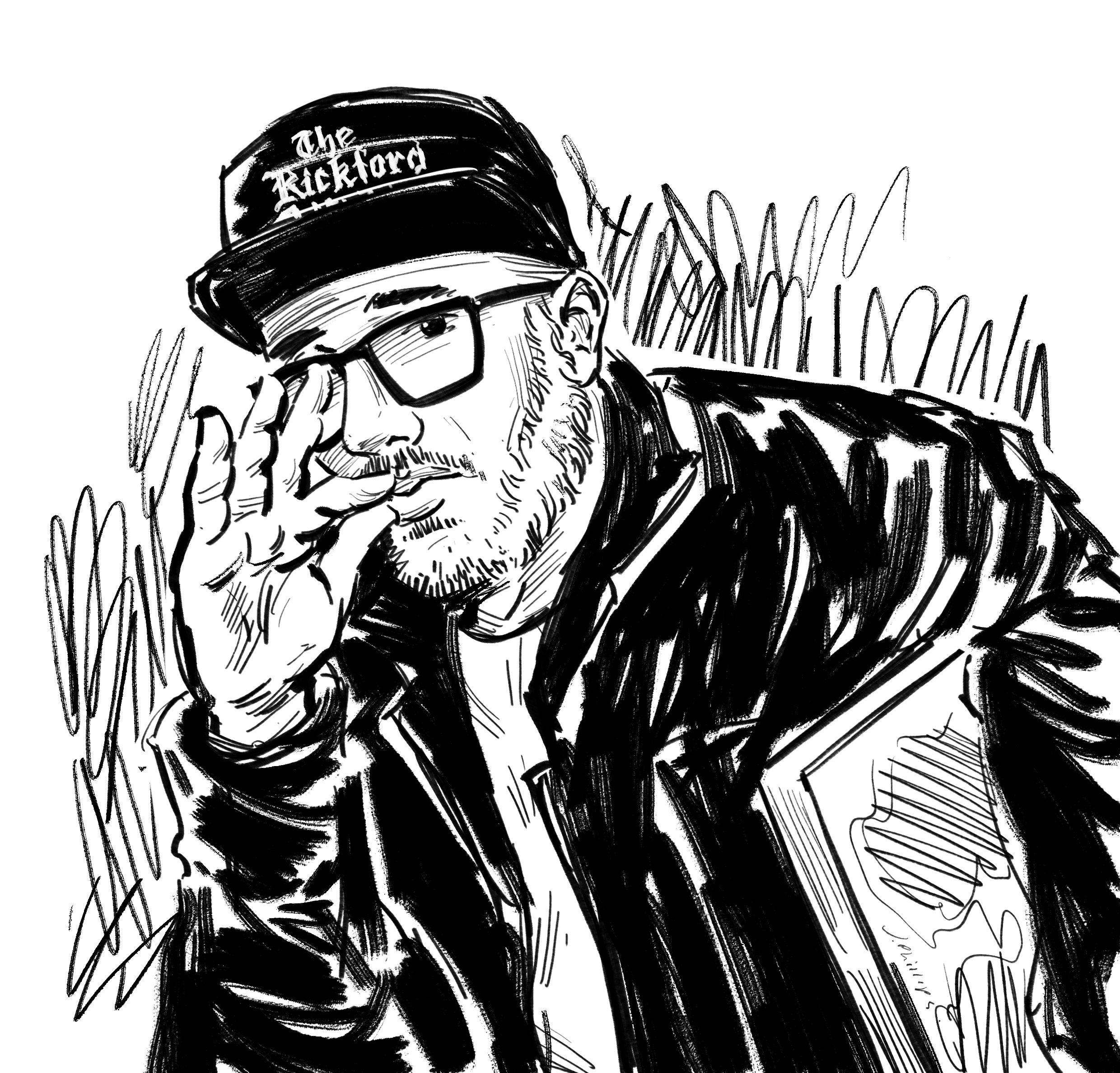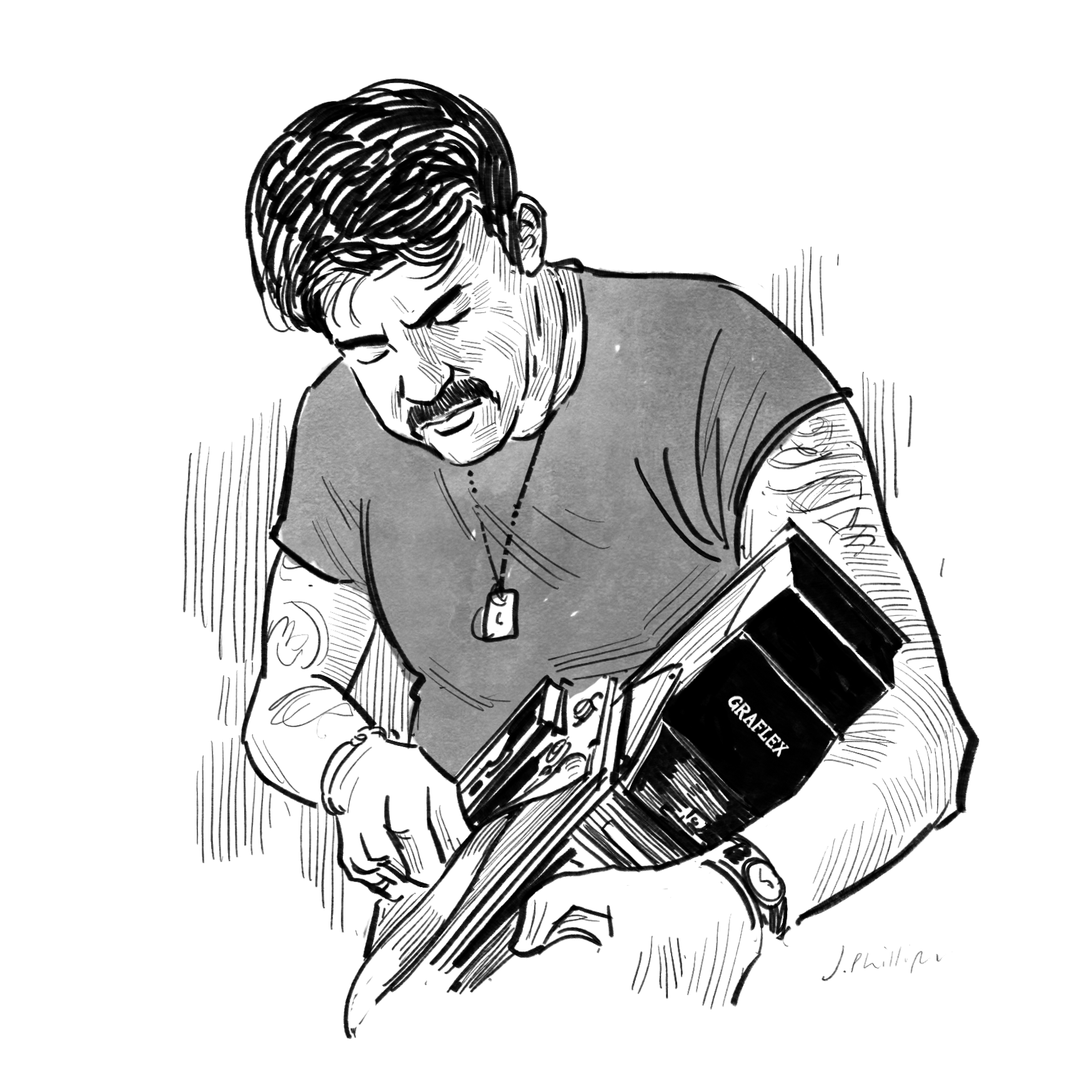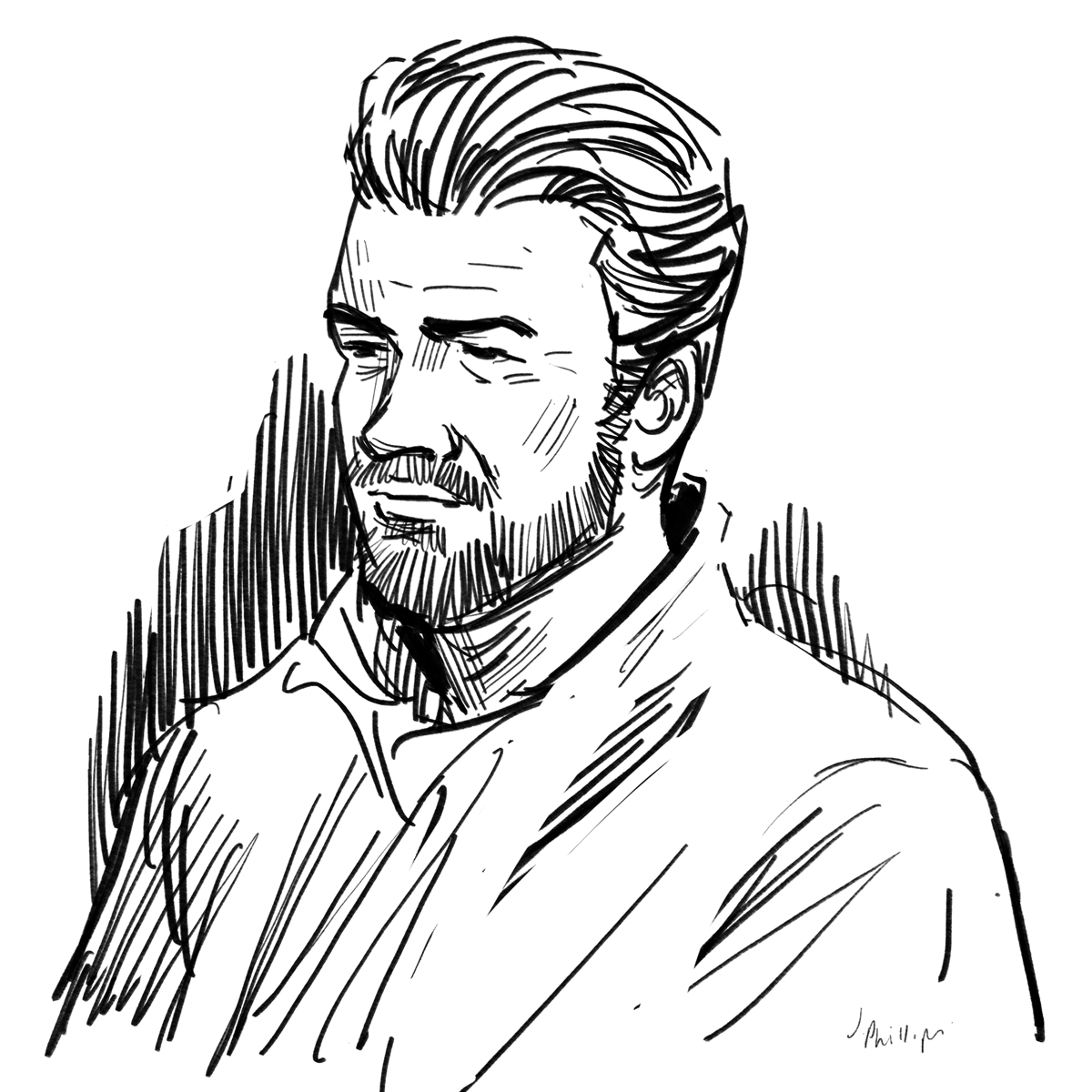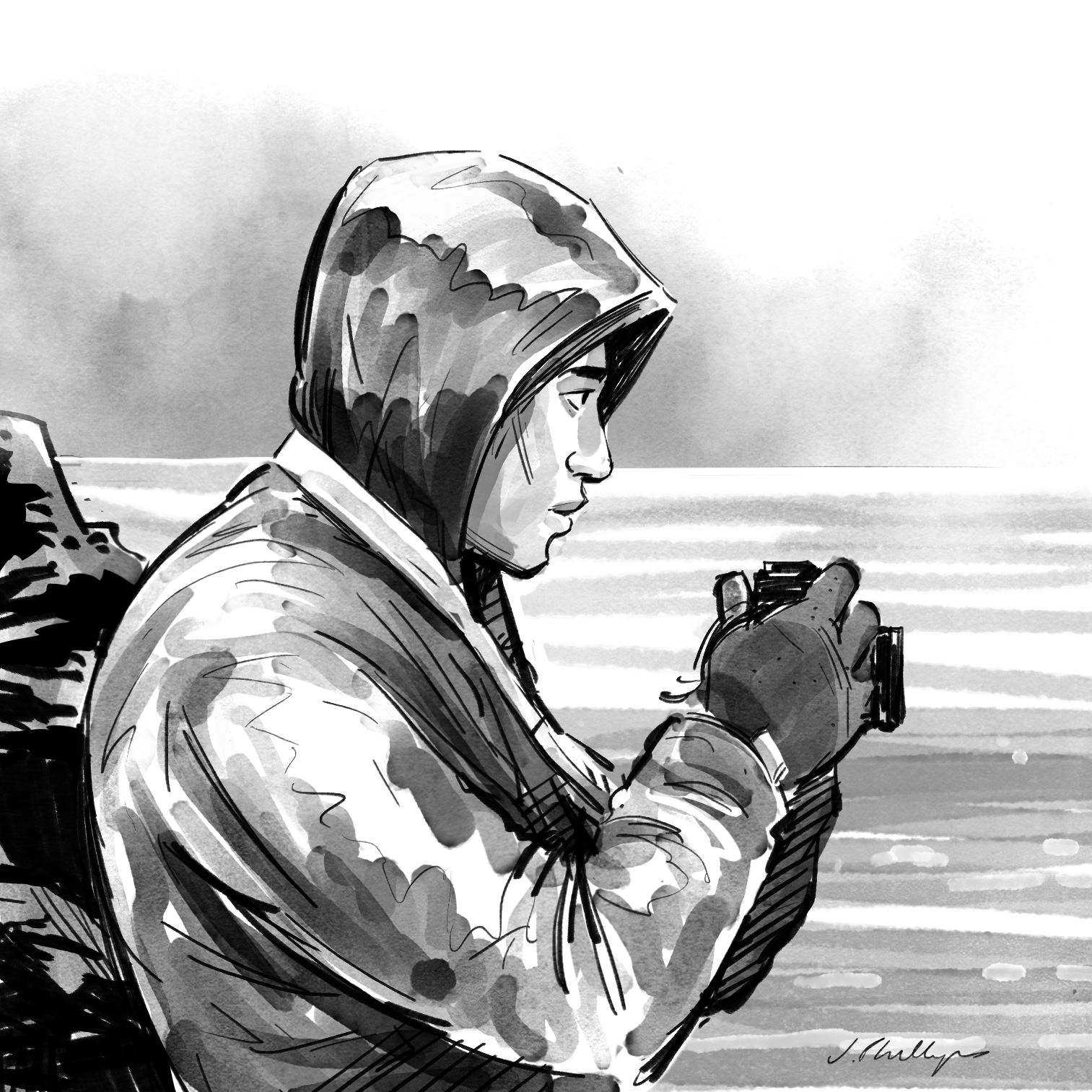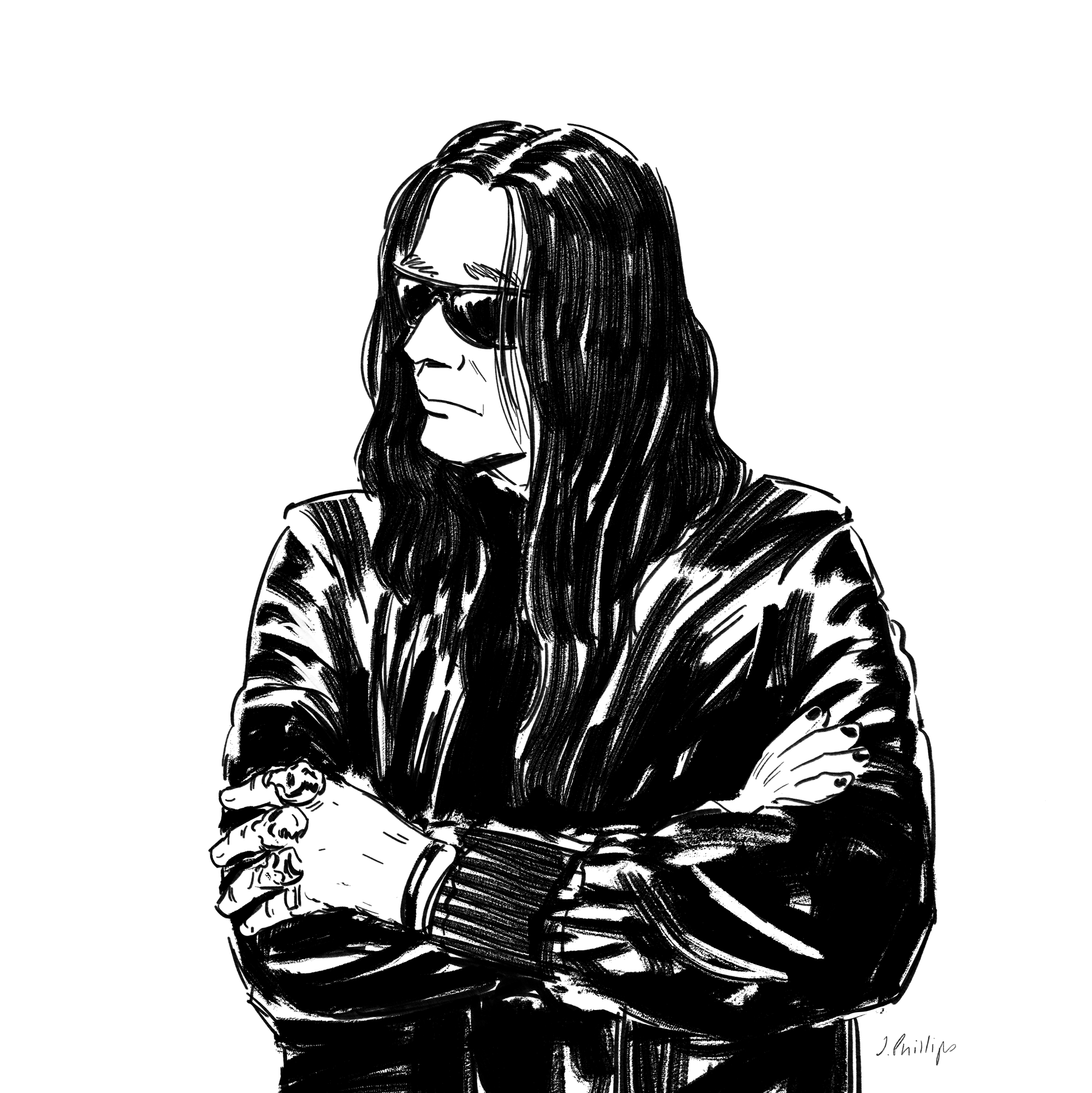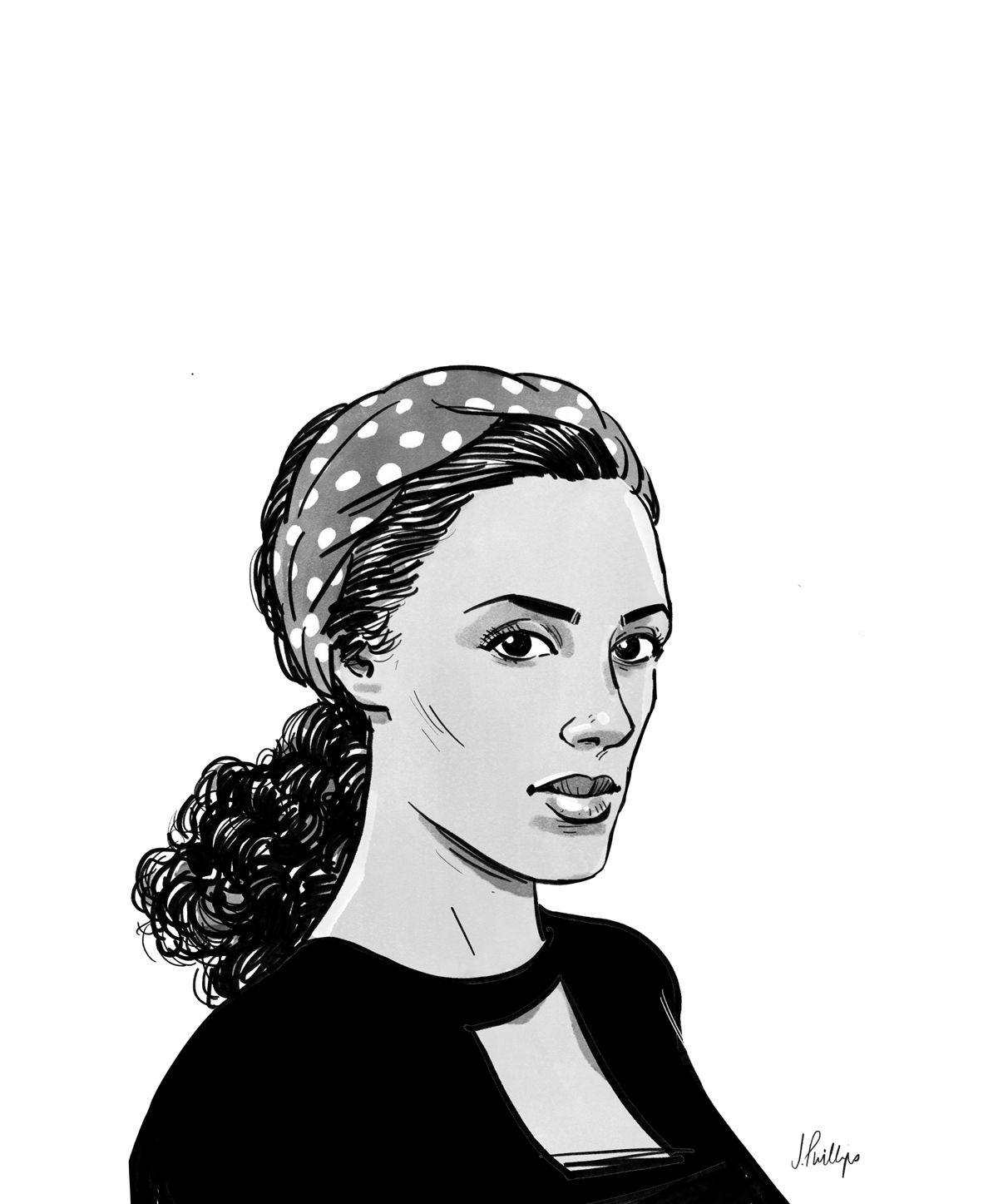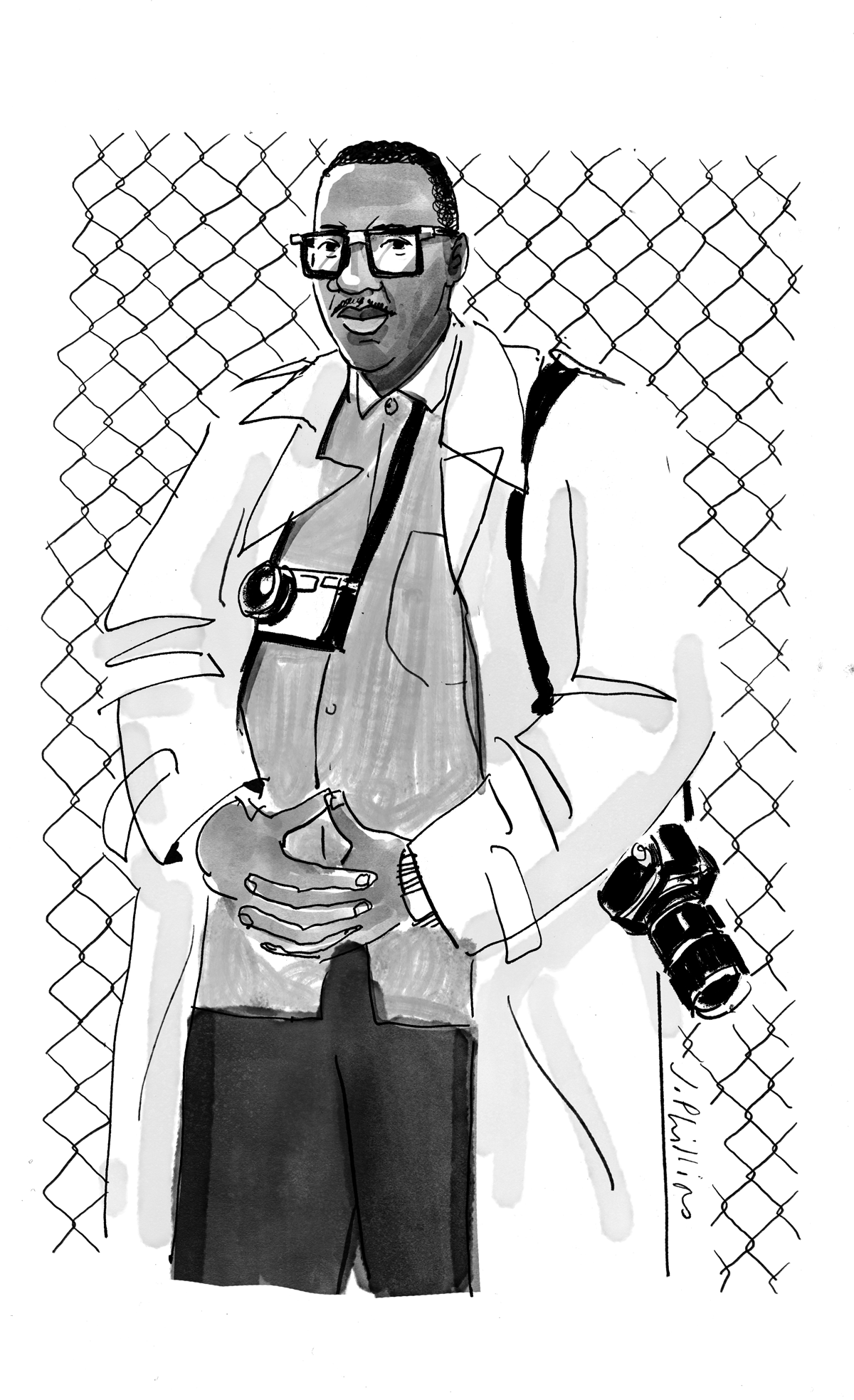Ricky Powell, Photographer
Ricky Powell is a legendary NYC street photographer known for his timeless environmental portraits of icons such as Basquiat and Warhol, The Beastie Boys, Run DMC, and many more. He is the author of four books.
His photographs simultaneously convey intimacy and detachment, providing a unique lens through which the viewer analyzes the mundane. Powell considers the relationship between the photographer and the photograph to be “a chemical connection of some sort.”
Ricky shares three photo books that inspire his work, talks about how he got into photography, and shares the stories behind some of his most iconic images.
This interview was edited for clarity and length.
Linda McCartney’s Sixties: Portraits of an Era,
by Linda McCartney
“It really struck me because she was low-key. She wasn't all dolled up. She was Plain Jane. And the photographs were mostly famous people, but they weren't pretentious photos. I liked that she was like, ‘You know, yeah. I took the train, or I went for a walk with so-and-so.’ They were simple, and I really liked it.”
Greenwich Village from 1963,
by Fred McDarrah
“Well, you know, I'm a Village kid. And his pictures of the Village back then, like from '63, were raw. He was shooting a lot of the artists that were hanging outside of the buildings. People on the corner of 8th and Macdougal, there's a coffee shop right now, it was the 8th Street Bookstore. And people used to go there to fucking put like a crate down, and stand up, and start ranting about shit. Like socialism, and Marxism. It's like the Bible for me. I got it signed by him before he died, like ten years ago.”
The Art of Advertising,
by George Lois
“This is a big coffee table book. It was a big inspiration for me, and later I got to meet him through David Hershkovits at PAPER Magazine. He knew I was a big fan of him, so he brought me to interview George for his paperback book. I liked the Esquire covers that George is famous for. They were really interesting—the imagery, doing the unthinkable, like putting Sonny Liston with Andy Warhol. There was a whole big thing when the book came out, that it was like a handbook for creative people. Everyone that interviewed him was like, ‘Oh, the original Mad Man.’ And he hated that. He hated that show, he said it was such bullshit. I think I brought it up and he started cursing so hard he was spitting. He was like, ‘That fucking bullshit!’ I love that he was a tough guy.”
Ricky, your career trajectory as a photographer is almost perfectly aligned with the emergence of Hip-Hop. How early did you get into Hip-Hop?
Right off the bat. I mean, there was a disco and there was a club called Peppermint Lounge, it was in Midtown first but it moved down to 15th Street and 5th Avenue, and it was a few blocks from my house. I started going there when it was a disco called the Electric Circus, in like '79. And then they turned it into Peppermint Lounge, and I remember I saw Grand Master Flash and the Furious Five in the summer of '81 play there. I was into it dude, I knew what was up. I was watching Soul Train when it started coming on TV when I was eight, nine years old. I just knew what I liked.
You know the story of how I got into taking pictures? Let me tell you in a nutshell.
I had this one girlfriend in '83 for like two years. We went out, it was tumultuous. She was from the Midwest. She dissed me a lot. So after two years we broke up. It was like spring of '85. She dissed me for a dude with tie-dye yoga pants. I felt humiliated, devastated, you know, broken. All that shit. About a month or two later I found a bag, and it was a bunch of her shit. There was dirty clothes, and there was a little camera in there. And I said, ‘You know what? I'm gonna take this camera, I'm gonna take pictures with it. I'm going to become something with it, or a photographer. And I'm gonna make her sorry she played me like a wet tuna sandwich.’
My first camera was the Minolta, AF1 or AF2. The auto-jammie. I started taking it with me to art openings, like Keith Haring openings and hip-hop shows. I shot the Warhol-Basquiat picture like that. I felt like a rookie in the Major Leagues and hitting a home run. Boom. Photography opened many doors for me. I was a physical education major at Hunter College. I was gonna be a gym teacher. But now with this camera in my hand, I went from Joe-Schmo, Joe-Schnook, to like the Rickster, Downtown Photographer. Like overnight. However you want to put it. A whole new everything.
Then I was shooting in night-clubs, like the scenes. And then magazines like PAPER Magazine, and like the East Village Eye, and Details, were asking me if I'd contribute to their night-club sections. Boom, right away. I was getting in with all these famous people. That camera opened many doors for me. I’m not saying I'm Paul Newman, but I happen to have the dual, uncanny ability to be something in front of the camera as well as behind it. You know what I'm saying? Because I have a little personality maybe, or a little pizazz. Or a Scorpio-mango-ism. That helped me also, you know, finagle.
Living in NYC your entire life, you’ve photographed legends of all kinds. What was that like? What is your process?
Thank you. Street photography works good for me. First of all, it's free. And second of all, I just have a natural knack for it. When I do a shoot, I tell a person, ‘Yo, just meet up with me. We'll go for a walk and talk.’
We'll be walking and talking, feeling each other out, and having a laugh. Then we'll be walking by a certain brick wall, or a stoop, I'll be like, ‘Yo, yo. Right here. This is perfect.’ So I think I have a good sense of what's dope. And thankfully it works out.
I’m just a regular dude. I captioned my pictures of 30 years as “pro photos on a hang-out tip”. When I toured with the Beastie Boys and Run DMC, I wanted to get dope photos, but I didn't want to be too intrusive. It was a fine line between me being their homie and being a journalist. I just went along with it, and had the camera so I'd take pictures on the fly. It's important because I didn't want to be like, ‘I'm Joe Photographer, and I'm really surreal and...’
That's one thing I like about street photography: it could be anywhere, like in front of the PS 41 wall. Each shot has the ambiance of the background and gives it an identity. It's a beautiful thing.
One time, I was in Switzerland for the Montreal Pop Festival with the Beastie's. We were leaving the hotel, and Smokey Robinson comes along. I'm like, ‘Oh shit, yo! Mr. Robinson, can I get a few flicks?’ He poses for me real nice, and then later I opened the camera and there's no film in the camera.
So, you know, I've had my blunders.
When you’re looking at your contact sheets or files, what are you looking for in the shots? How do you know when you got the shot?
You know, just using my common sense. I know what I like.
When I'd get rolls from shooting live performances—because you never know—you shoot so many pictures and then you forget even what you shot. Then later on you're looking through the shit, a lot of the shit is wack, and then there's one gem. Like, ‘Oh, shit! Alright.’ That's the only way I can think of right now.
What are you shooting with these days?
Basically just the phone. Just for Instagram. I still have my Minolta auto-focus, auto-jammies from the '80s that I use for photo shoots, like look-books or whatnot, or a special someone wants me to shoot some publicity shots of them. But when I get a gig, I always say to the person who hired me, ‘Now listen. When I show up, I don't want no funny looks when you see my equipment. You know, it's film. I bring my auto-jammie. And if my pictures were good enough in the '80s to be iconic images, they're still good enough to work.’
I'm not changing. I don't buy expensive digital cameras. I'm just not interested.
So you don't shoot digital, except for the phone?
I have a little pocket-digi, that was like $300. I use that for little shoots, works good enough for me.
Here's my famous picture, Basquiat and Warhol. That's the spring of ’85. Shot with the Minolta.
They were on their way to their famous duo show at Shafrazi on Mercer Street. I actually went with two graffiti writers who are legends now, Zephyr and Revolt. They were like Butch Cassidy and the Sundance Kid, the dynamic-duo. And we're sitting across the street looking at a whole crowd, waiting for Warhol and Basquiat, so I took a few shots of them.
And then Basquiat and Warhol started walking South from Houston Street, and I was like, “Oh shit, hold on.” I kind of skedaddled across the street, stopped in front of them. Basquiat knew me from around the area, and I used to be like, ‘Yo, what up Jean [English pronunciation)]?’ And he always would roll his eyes and be like, “Ugh. My God, it's Jean [French pronunciation)!” I'm like, “Oh, sorry dude! I'm not good with exotic names.”
Then I said, “Yo, can I get a quick one?” He said to Warhol, “He's alright. He’s cool.” And they paused for me. I got that shot, with like a thousand people behind me.
You know, when you put your pants on and you get out the house, anything is possible.
You can't plan for that kind of stuff, right? That just kind of happens by putting yourself out there.
No. You gotta be prepared. I used to try to go to those art openings just to meet people, with the fucking hairstyles and the eye make-up like from Bladerunner. That's all. I brought the camera along.
When you're on a shoot, and people have a really big ego, how do you manage that? Does it become an impediment?
It really hasn't happened too much. One time I was working for Lynn Goldsmith, for her agency LGI, and she told me, “You know, Oprah Winfrey is at this restaurant on 63rd and 1st. Go up there.”
I was waiting three hours for her to finish her meal, and she finally was coming out and I thought it wasn’t going to happen. But actually, she was very nice. I've met a lot of legends, like Joe Namath and Walt Frazier, and they've been really nice and sweet. It always made me think, ‘Oh my God. How beautiful.’
So basically the only ones that are stank are the fucking wannabes.
And how do you deal with ego on set while you're doing the shoot?
I'm like, “Yo. Go fuck yourself.” I ain't putting up with that. I just won’t. I can't work a regular job. I had jobs at restaurants or clothing stores, I walked out after five minutes. I just know how I am naturally, and exist.
Like I was saying with photographers, the ones that are cool, I embrace them. But the ones that come with the stank attitude, I'll ignore them. I give what I get.
How do you feel about Instagram?
I like it. It's good for the most part. I like that I can shoot something and put it right up. When I used film, I would have rolls piled up at my house. If I took a picture of something, I'd be like, ‘Yeah, I'll make you a print when I see you one day.’ But now I can, boom, right up on Instagram. I love that. And then put a little caption, to put my personality, to add something to the image so it becomes a Ricksterism.
I think of it as a magazine. People can come and check. I use it to promote myself in a way, try to show clients or people what I'm doing. And you know, if they want to get down with me. You know the meeting I had in Midtown today was for a big brand, and they're going to make a whole collaboration with me now, because of what they saw on Instagram.
I also like my dog shots—you know about my dog shots? People see them and say, ‘Oh my God. Ricky Powell shot Run DMC in front of the Eiffel Tower, this is what he's shooting now? Dogs on the street tilting their heads?" I get tickled from that.
I have a special category of my photography. Pictures I took while I was working a bullshit job. So then there's pictures I shot as a bike messenger, pictures I shot as a substitute school teacher, shots I took while I was walking dogs, etc.
I shot my famous Cindy Crawford shot as a busboy. I was working MK, which was on 25th and 5th, in '89. I was about 28 or so. Tail end of me working at clubs. I had a bus bin full of dirty glasses and bottles. I knock on the girl’s bathroom door to go clean up. I go in. Ask if anyone’s here. Nobody's saying anything. So I'm like, holding the bus bin, cleaning up bottles, putting them in. All of a sudden, I hear the door for the stall swing open behind me, and it's Cindy Crawford. She's adjusting her jacket. I go, ‘Oh, shit! Yo, you mind if I get a flick?’ She's like, “Okay.” I lower down. One shot. I said, ‘Yo, thank you.’ Put it back in my pocket.
That's also good to know for young photographers, to know that you can make that kind of work while doing something else to pay the bills.
Well, I did it to battle the mundaneness of busing tables, bike messengering, serving, waitering, substitute teaching, etc. My first job was selling frozen lemonade on the street in Sheridan Square during the week, and West Broadway on the weekends. It was just horrible, although I did get another famous shot there. That's where I shot one of my famous Basquiat photos, called Loose Change.
Basically all you need is a PhD. Push-Hit-Dummy. And so it was easy.
Which one of those jobs got you the most photos that you're happy with?
The nightclubs and the bike messengering.
In 2015, I noticed it was like 30 years since '85. So to give myself a little oomph in the photography world, I'd show pictures I shot from the '80s and be like, “Celebrating 30 years of pro photos on a hang-out tip.” Meaning, I just took these shots on a hang-out tip, they just happened to be highfalutin, fashionable by accident. I'm sloppy, but I'm dope.
Would you say that the camera is kind of like your passport to the world in that sense?
That's one way of putting it. I think that I've been embraced because I'm kind of like an underdog. I'm not really out there trying to say I'm this and that. I'm just like me. I think that's endearing to certain people. They want real. Someone who's just a regular dude.
New York City has been both a teacher and a canvas for your work. What have you learned about the city and the people on the streets?
Well, from what I've observed, I don't like it. I'm not happy with seeing how it evolved. I was born in Brooklyn, but I grew up in The Village.
Currently, New York is fucking wack. And that's that. I walk down A Street, which used to be the Boulevard of The Village. So many cool shops and people hanging out. You'd see people like, ‘Hey, what's up?’ And now it's all just new jacks trying to ace each other out, not looking at each other, or trying to look like they're too fucking important. People with no credentials, no flavor, trying to act like they're the shit. You know, The Village, New York City has turned into a cornball convention.
Basically a theme-park for the cornballs.
Illustration Reference by: SMBZine












